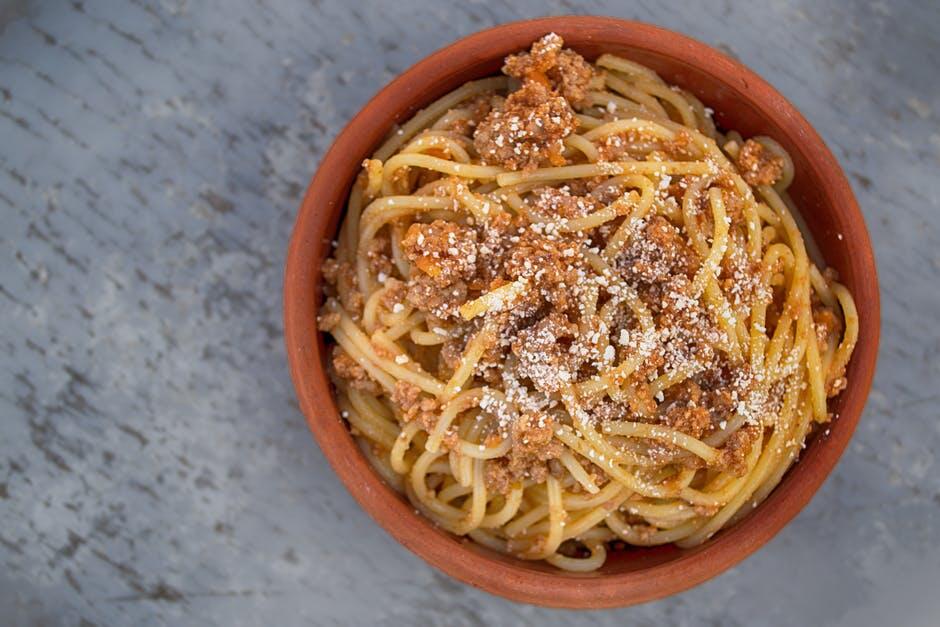Have you heard the expressions “Tasting bad means it’s good for you” or “Healthy foods taste bad”? The idea is that if it’s healthy, it’ll be a terrible flavor experience.
The assumption isn’t helped by the various types of cuisine using unhealthy foods. Soul Food is a good example. It’s delicious, but frying chicken in copious amounts of oil isn’t the greatest for your well-being.
Italian food also uses many ingredients that can be unhealthy — like starch. But you can use healthy food swaps to make your favorite Italian dishes.
We know starch is a common star in Italian foods. But bear with us, we promise there are healthier food swaps that can taste as good.
Below are a few simple substitutions for your dishes. Here are eight healthier food swaps for all Italian food lovers.
1. Cook Your Pasta Al Dente
Admittedly, this tip might seem like a cop-out. It’s also more for those who might not be the greatest at cooking pasta. However, al dente pasta is a healthy food swap as it’s got a lower glycemic index.
First, let’s discuss what “al dente” means. This is when you cook your pasta so it’s still somewhat firm when bitten.
As for the “lower glycemic index,” this means the starches within the pasta assimilate more slowly. Your body takes on less glycemic load, in other words, your blood sugar doesn’t spike.
Because of this, al dente pasta is a better choice for diabetics wanting pasta. Note that starches are something diabetics should eat sparingly.
Al dente pasta fills you faster, which means you eat less. This in turn helps reduce portion sizes and aids with weight loss.
2. Consider Zoodles Instead of Noodles
“Zoodles” are zucchini noodles and a popular substitute for the traditional starch noodle. Swapping soft noodles for al dente is a fine way to keep healthy, but zoodles are a great choice for the occasional meal.
You can use a spiralizer to create zoodles or buy them premade. Of course, you don’t have to use zucchini noodles. Carrots are a fine substitute, and butternut squash is “self-noodling” when baked.
If you don’t like the texture or taste of veggie noodles, you can mix them with al dente pasta. It’ll offset the flavor and feeling of their vegetable counterparts.
Remember that balance is the key. Low-carb meals can be detrimental if improperly managed.
3. Opt for Whole-Grain Pasta
There are three types of pasta: refined, enriched, and whole-grain. Refined and enriched pasta comes from milled grains with the outer layers stripped away.
These missing layers contain nutrients like vitamin E and B, essential fatty acids, and fiber. Whole grains don’t have this issue.
It’s healthy for digestive health and lowers the risk of obesity, stroke, and heart disease. Whole grain delivers all the nutrients your body needs to function.
4. Pair Vegetables and Carbohydrates
Part of why carb-heavy Italian dishes are so unhealthy in the United States is how we cook them — often without vegetables.
There are two ways veggies help reduce the impact of carbs. The first is that fiber-heavy vegetables, like broccoli, slow sugar absorption.
The second way veggies offset carbohydrates is they lower the calorie count. It’s simple: the more vegetables you have, the less noodles you need to create your meal.
5. Substitute Your Proteins
The final tip to do with pasta involves supplementing your dish with protein. The idea is to keep you fuller for longer and reduce the need for seconds. But the proteins you choose matter.
Sausage, pepperoni, and prosciutto are very salty and contain plenty of saturated fats. Consider chicken, shrimp, roasted ham, or meatballs. Your meatballs should be made of lean meat like ground chicken or turkey.
Our healthy food swap list has so many pasta prep tips because the type of noodles you eat and how you prepare them matters. We want to stress that you can have good Italian pasta without compromising your well-being.
6. Choose Your Cheese With Care
People assume cheese is unhealthy and can’t be part of a healthy diet. That’s not true — of course, part of the trick is moderation. But the type of cheese you pick also matters.
Mozzarella, blue cheese, and feta are healthier food swaps for brie and triple-crème. The former are low-calorie and taste great in salads. However, blue cheese and feta do have relatively high sodium content.
Brie and triple crème have an elevated saturated fat content. Grass-fed cheeses are healthier food swaps as they contain more omega-3 fats which support heart health and more nutrients.
7. Use Better Marinara Sauce
Packaged American foods are generally filled with sugars, salts, and fats. Marinara sauce is no different, unfortunately, that’s not good for your diet. One way to source easy healthy food swaps is label reading.
Read the back label the next time you shop for spaghetti or lasagna sauce. The healthiest marinara should hover around four to five grams of sugar.
DIY marinara sauce is an even healthier alternative. Use Italian peeled plums, low-sodium tomato paste, and season with your favorite spices.
8. Learn to Make a Gremolata
Gremolata is an Italian garnish of fresh parsley, raw finely chopped garlic, and lemon zest. It’s a flavorful sauce that doesn’t contain many calories.
You can use it instead of marinara or cheese sauces for another healthier alternative. Here are instructions to make gremolata yourself.
Finding Healthy Food Swaps for Italian Meals
Finding healthy swaps for food involves plenty of substituting carbs or preparing them in a specific way. For example, cook pasta, al dente, or switch it with whole-grain or vegetable noodles.
Other healthy food swaps include supplementing noodle portions with vegetables, like broccoli. Consider choosing less salty proteins — like chicken.
Cooking Italian meals yourself is one way to get healthier meal choices. The other is choosing Ron’s Original Bar & Grille. We’ve served Lionville-Eaton, PA, fresh, healthy meals for 33 years.
All ingredients are free of added hormones and antibiotics. There is no MSG, artificial coloring, or artificial sweeteners. We also have gluten-free and vegetarian options, click here to view and order from our various menus.

